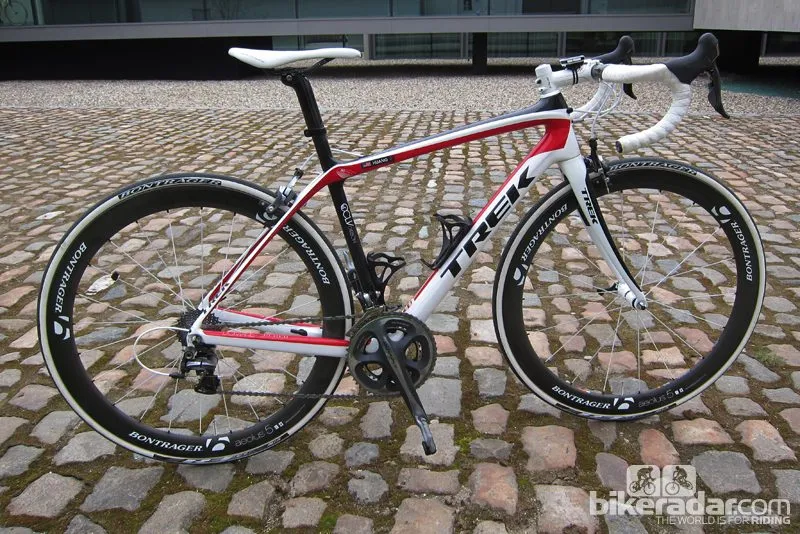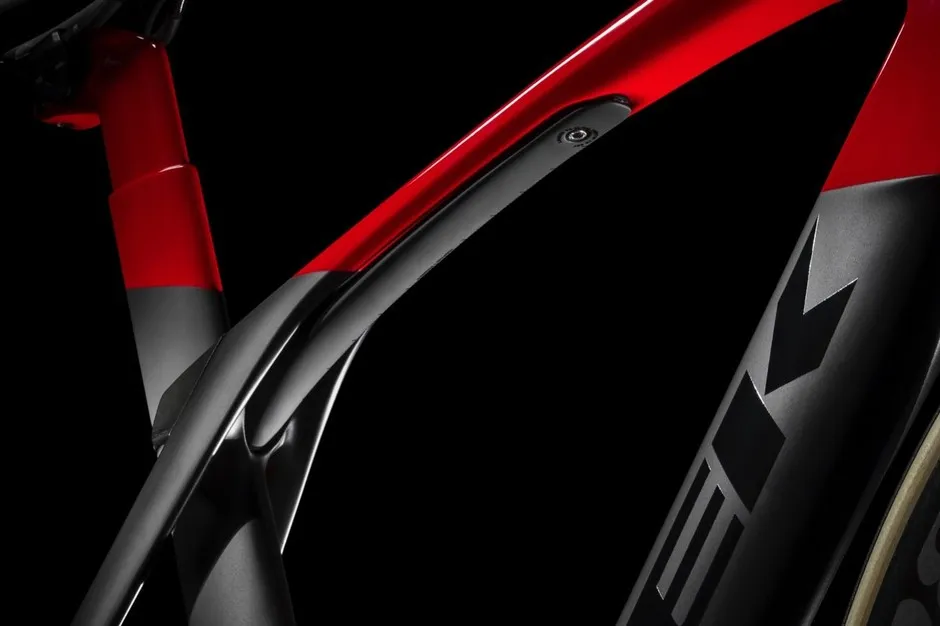Trek has launched the third generation of the Domane, featuring a revised rear IsoSpeed layout first seen on the new Madone, massively increased tyre clearances, neat integrated storage, general aero-improvements and... oh, it’s disc only.
- 2020 Trek Domane Mk. III first ride review
- Trek’s cheapest ever Madone is here
- Best road bikes 2019: how to choose the right one for you
2020 Trek Domane Mk. III key specs and updates
- Updated top-tube mounted IsoSpeed system first seen on Madone added to Domane
- Clearance for tyres up to 38mm wide
- Mudguard compatability retained
- Integrated storage
- Semi-internal cable routing
- T47 threaded bottom bracket shell
- No more women's-specific models
- All stock bikes come in H2 endurance fit
- Disc-only
- Bikes start at $2,499 / €2,299 / £2,100 for Tiagra-equipped model rising to $11,299 / €10,499 / £9,000 for top-end build
A short history of IsoSpeed
The original version of the Domane endurance bike launched in 2012 and introduced Trek’s signature IsoSpeed decoupler.
IsoSpeed added a pivot at the seat cluster, allowing the seat tube to pivot around the top tube to improve comfort when seated. The same tech was ported to the Madone - Trek’s aero bike - in 2015.
While impressive, the original IsoSpeed system was often criticised for being unbalanced, with the firm front-end contrasting oddly with the squishy rear.
Mark II of the Domane came in 2016, with a version of the IsoSpeed decoupler also being added to the front of the bike in a bid to help balance out ride feel and further improve comfort on rough terrain. The rear decoupler on this bike was also adjustable to fine-tune the level of compliance.
The same double-ended fun was introduced to the Madone in July of last year, but the layout of the rear IsoSpeed system was changed, with the adjustable portion moved from the seat tube to the top tube, and an elastomer-based damper added to the pivot.
Now we have the third version of the Domane, with Mk. III adopting the revised layout first seen on the Madone for SLR-level bikes.
Comfort is king
The Domane’s USP has always been comfort and, as is to be expected, Trek says the new Domane is its most comfortable bike ever, with a claimed 27 percent increase in compliance over the outgoing SLR frame. The second-tier SL-level frame, which retains the adjustable seat tube-based system as seen on the outgoing SLR models, is said to have roughly the same level of compliance as the old bike.

The SLR's top tube system is accessed via a removable panel, where a slider can be moved to adjust compliance. If our experience with the Madone is anything to go by, adjusting this makes a noticeable difference to ride quality.
In fact, the flagship Madone SLR 9 Disc took the superbike prize in our annual Bike of the Year awards.
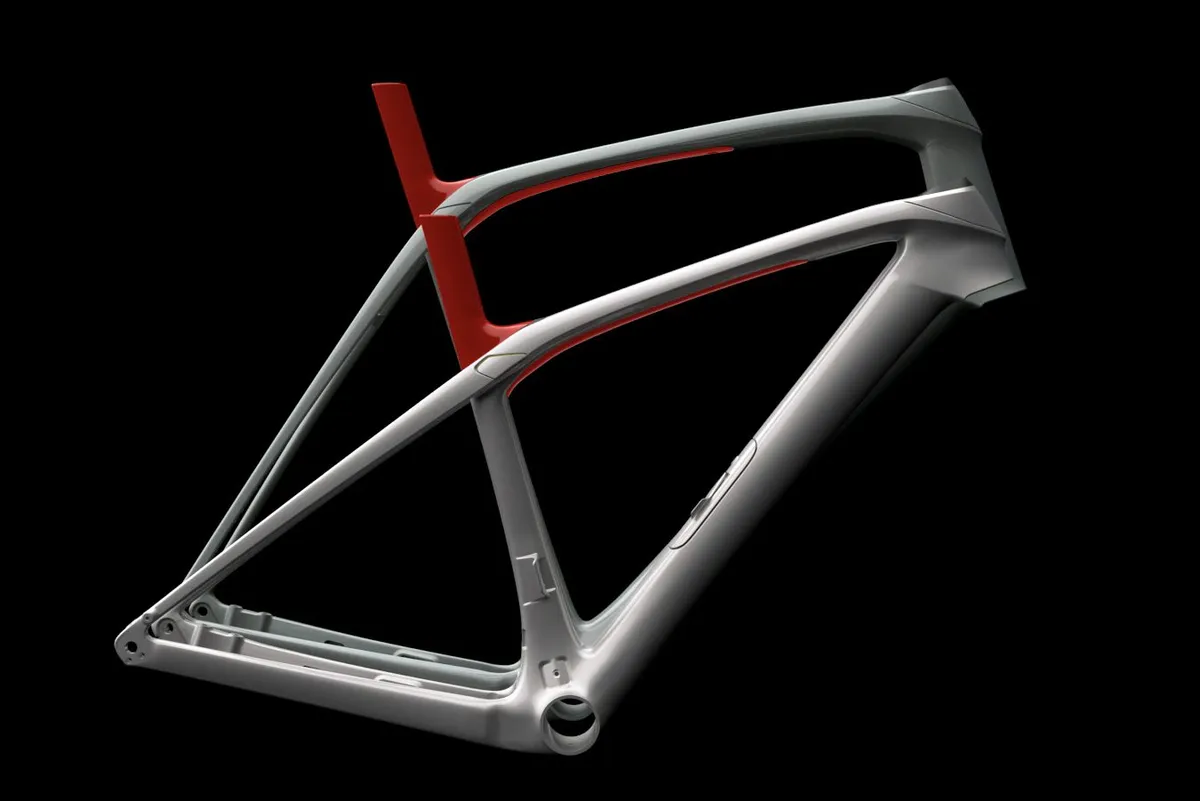
Each size of the bike is claimed to have specific levels of compliance tuned into the frame, with the dimensions of the IsoSpeed system and the layup adjusted to suit. The frame is available in sizes 44cm through 62cm.
Like the outgoing model, the front-end is not adjustable. The bike also retains the IsoCore handlebar, which contains a layer of elastomer to improve damping.
WSD no more
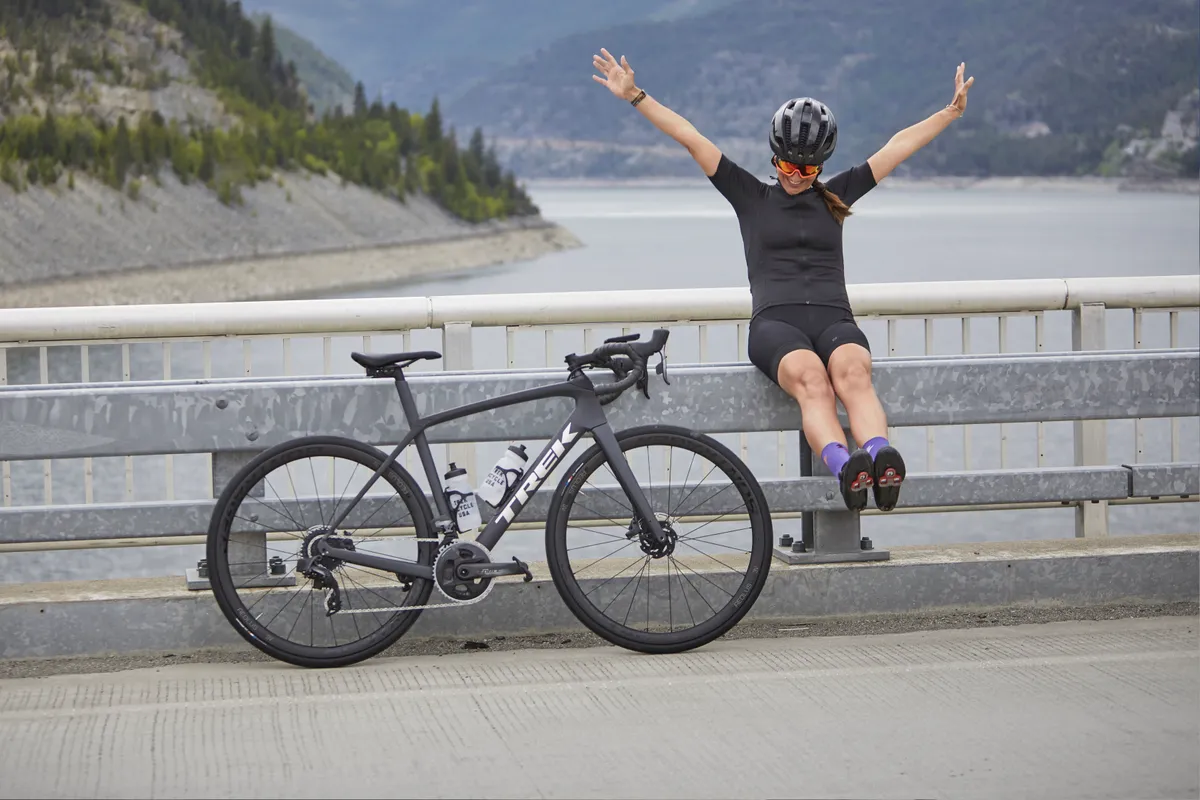
Trek is ditching women’s-specific builds with the new Domane, instead opting for “bikes for humans”. Trek will now offer a wider range of sizes to accommodate the varying needs of men and women.
There seems to be no consensus on the best way to approach building bikes for women, with Specialized dropping the Amira women's race bike in favour of a single Tarmac platform in 2017, so it’s interesting to see Trek go down this path.
H2 4 lyf
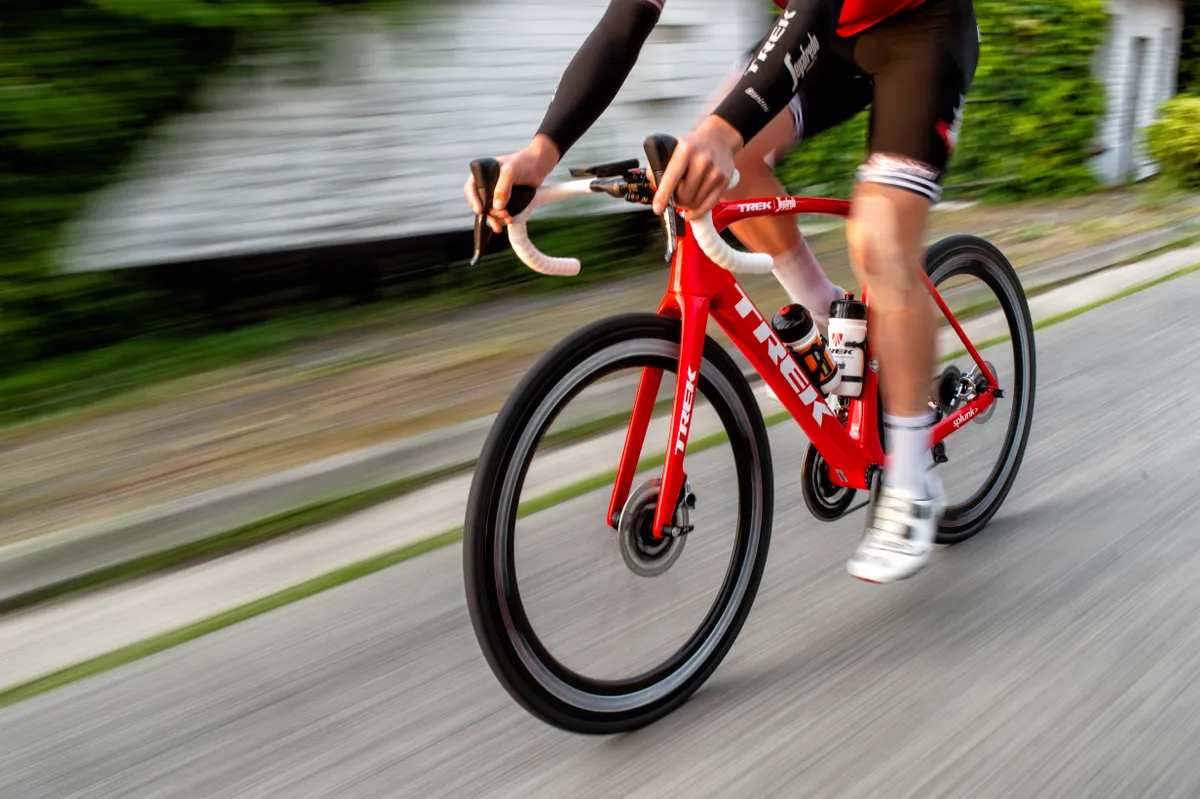
Trek will no longer offer the Domane in its more aggressive H1 fit.
Instead, stock builds will only be available in Trek’s H2 endurance-focussed fit, with Project One custom bikes available via its middle-of-the-road H1.5 geometry, which was first introduced with the new Madone.
In terms of numbers, the H1.5 bike has an ever so slightly more aggressive head angle, chops roughly 3cm off the stack and has a slightly longer reach.
Otherwise, the geometry remains the same as the previous Domane.
The Domane SLR frame is claimed to weigh 1,335g in an unspecified size with all hardware. The SL-level frame is claimed to weigh just 30g more at 1,365g, again in an unspecified size. This presents roughly a 200g increase over the outgoing bike. It is not clear whether this increase applies to just the SLR-level frame, with its updated IsoSpeed layout, or the SL frame as well.
Aero tubes for everyone!
The bike clearly takes design cues from the aero-focussed Madone - every tube has been graced by the hand of aero goodness and the bike is claimed to be faster overall.
Putting this into context, Trek claims that "in a wind tunnel test comparing the new frame to last year's, the new frame saved riders over one minute per hour". This is, indeed, correct — the new Domane is so fast it can actually turn back time!
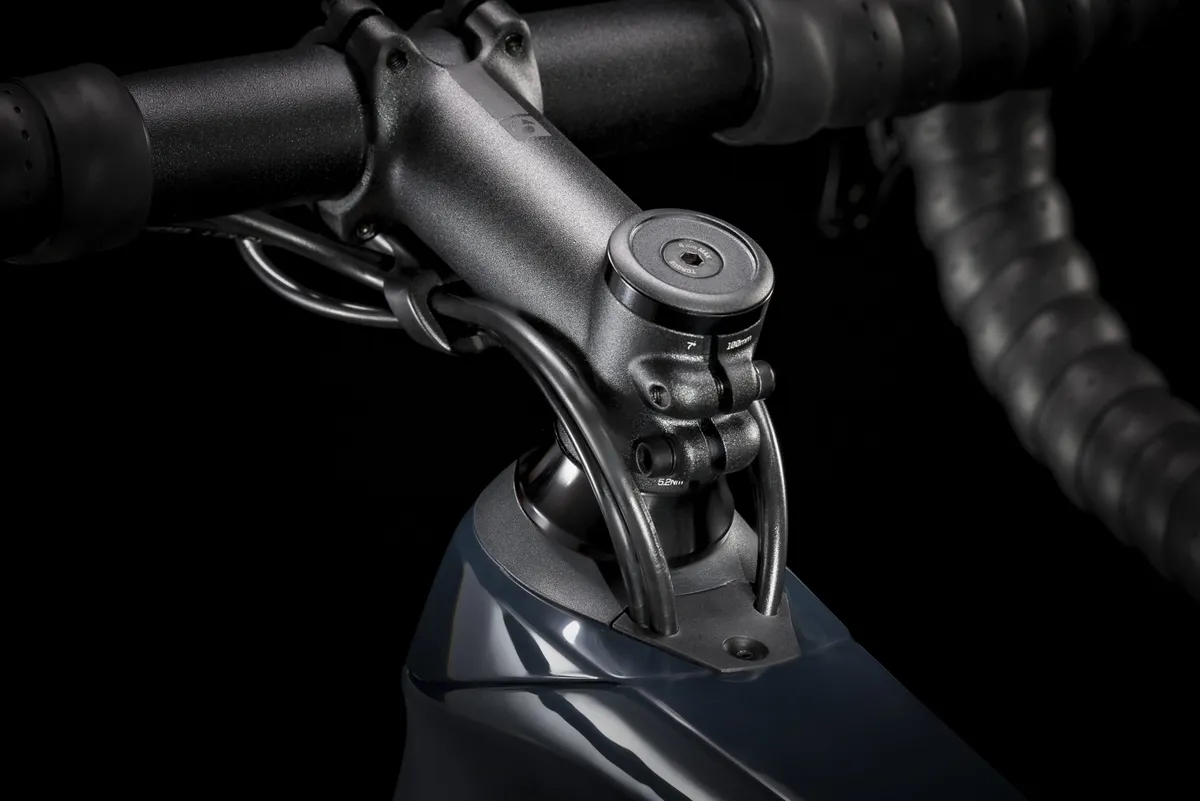
Alongside revised tube shapes, the bike now features almost fully hidden cables — cables and hoses exit the bar where they run through a small guide before entering the backside of the head tube. This is claimed to reduce drag and generally clean up the front of the cockpit.
Given so many bikes — including endurance-focussed models — are going down the fully-integrated cabling route, it’s surprising to see Trek adopt what is an admittedly pretty old-school looking design (think older Cervélos).
On the other hand, while it’s maybe not as clean looking as other setups, the Domane is compatible with traditional cockpits and, critically, aftermarket finishing kit. This can only be a good thing for consumers. It also means the bike will be far easier to dismantle for travel.
The bike also ditches Trek’s seatmast topper in favour of a system similar to that seen on the Madone — a seatmast extends above the top tube with an internal seatpost, available in two different offsets, sliding into this. Both the SL and SLR-level bikes feature this post.
Disc only, darling

The new Domane is disc only. We won’t dwell on this for long as it is a dead horse that has well and truly been flogged, but the endless march of disc domination is truly unstoppable now.
Wait… is this a gravel bike?

Of great interest to gravelistas is the news that clearances have been increased on the new Domane, with space for 38mm tyres on the frame. This is the quoted clearance with the ISO-mandated 4mm of space on either side of the tyre, so it will be possible to fit even larger tyres.
The bike also maintains the hidden mudguard (or fenders, if you must) mounts of the previous generation of the bike, with clearances for 35mm tyres when using mudguards. There are too few top-end bikes with provisions for fitting mudguards, so we applaud Trek for sticking with these.
All bikes will come with 32mm tyres as stock, except for the more race-focused SLR 9 eTap, which comes with 28mm tyres.
BB90 is dead, long live T47
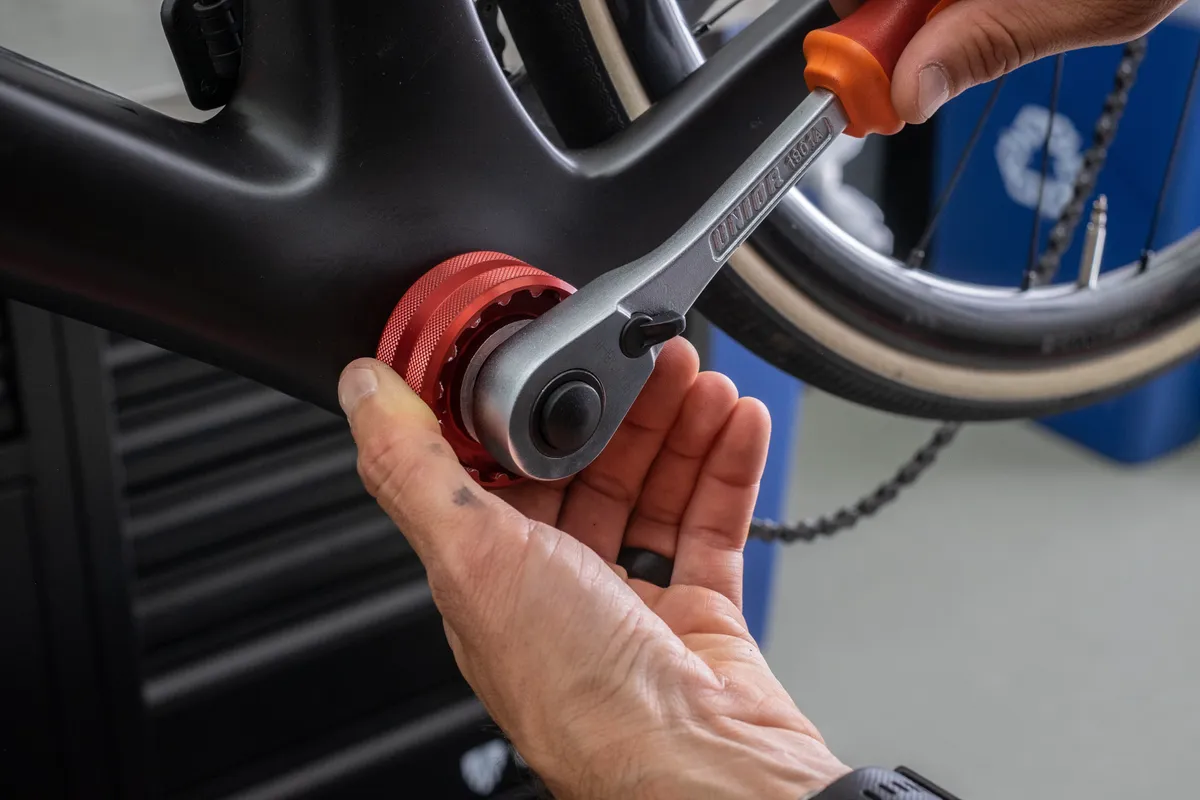
Of most interest to the mechanics of this world is the news that Trek is ditching its proprietary BB90 bottom bracket standard for road bikes in favour of the T47 threaded BB standard.
First introduced as a collaboration between Argonaut and Chris King in 2015, the oversized threaded bottom bracket standard was recently adopted on Trek’s Crockett cyclocross bike.
We’re really hoping this trend carries over to Trek’s future bikes.
Integrated sandwich space
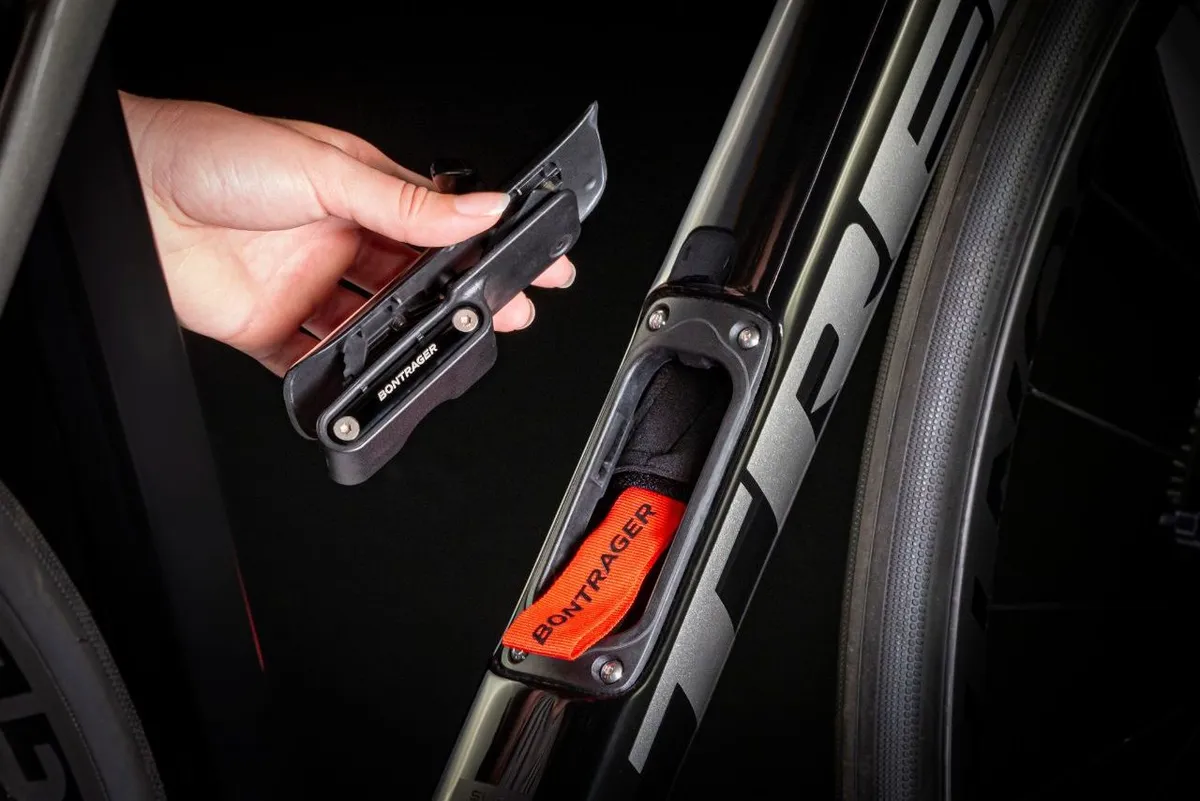
The new frame features integrated storage. Hidden behind a small plastic trap door is a space that allows riders to stash a CO2 inflator, tyre levers and a spare tube inside the down tube.
A small bag designed to contain a multi-tool and levers comes with each bike, though no tools are included.
Trek Domane mk. III range

The new Domane SL range starts at $2,499 / €2,299 / £2,100 for a Tiagra-equipped model, rising to a heady $11,299 / €10,499 / £9,000 for the top-end SLR 9 model.
It’s interesting to see that no 1x builds are offered yet. With its all-road leanings and the arrival of modern 1x-compatible road drivetrains, the Domane strikes us as the sort of bike that would be perfect for a 1x build. As always, the new Domane is available via Project One (Trek’s customisation program).
It’s worth noting that Campagnolo groupsets are no longer available via Project One - seen sporadically in the past but receiving little demand, according to Trek.
Pricing and spec information for the full range of bikes was not available at the time of writing, but we’ll bring them to you as soon as we can.
Curious to hear how we got on with the bike? Check out our first ride review!
